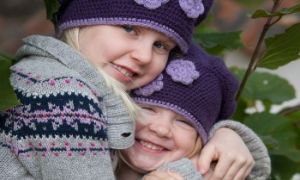Possum Skin Pedagogy is an educational framework designed for early childhood practitioners to embed Aboriginal perspectives into their teaching. The following article provides information on the seven narratives that explore Aboriginal culture and aspects of implementing possum skin pedagogy.
Developed by Sue Atkinson Lopez, this approach uses the possum skin cloak, a significant cultural artifact in Aboriginal communities, as a metaphor for knowledge transmission and cultural continuity.
The pedagogy is structured around seven narratives that explore various aspects of Aboriginal culture and history, such as:
- Journey and Healing: Traditions, loss, survival, and regeneration.
- Ceremony/Spirituality: Emphasis on the ceremonial place of skins in Aboriginal communities, e.g. the place of skins in Welcome to Country, in births and deaths.
- Aboriginal Literacy: Learning the meaning of symbols through storytelling.
- Nature: Connections to Country and how Aboriginal people sourced everything from the land.
- Family: Roles of men, women, and children in the creation and use of possum skin cloaks.
- Science and Technology: The use of tools in constructing possum skin cloaks, both historically and in contemporary times.
- Recreation: Games and activities created by Aboriginal children and adults for sport and education.
This framework not only honors the cultural heritage of Aboriginal communities but also aims to strengthen the voices of Aboriginal children as future Elders.
Key Aspects Of Implementing Possum Skin Pedagogy
- Cultural Significance: Possum skin cloaks were traditionally used by Aboriginal people in Victoria. They were not only practical items but also held deep cultural and spiritual significance. Each cloak was unique, with symbols and designs that told stories of the wearer’s clan and Country.
- Protocols and Respect: It’s crucial to follow cultural protocols, such as seeking permission from Elders and using materials like ochre appropriately. This ensures that the practices are respectful and authentic
-
Practical Application: Educators can incorporate these narratives into their programs through storytelling, art, and hands-on activities. For example, children can create their own symbolic designs on paper “cloaks” or learn about the natural environment through guided outdoor activities.
-
Community Involvement: Engaging with local Aboriginal communities and Elders can provide valuable insights and support. This collaboration helps to create a more inclusive and culturally rich learning environment2.
Implementing Possum Skin Pedagogy can enrich early childhood education by fostering a deeper understanding and appreciation of Aboriginal culture and history.
For more information and to download the educators guide: Possum Skin Pedagogy
References:
Possum Skin Pedagogy, AGECS
Possum Skin Pedagogy As An Approach To EYLF Principle, Story Kate







 Here is the list of the EYLF Learning Outcomes that you can use as a guide or reference for your documentation and planning. The EYLF
Here is the list of the EYLF Learning Outcomes that you can use as a guide or reference for your documentation and planning. The EYLF The EYLF is a guide which consists of Principles, Practices and 5 main Learning Outcomes along with each of their sub outcomes, based on identity,
The EYLF is a guide which consists of Principles, Practices and 5 main Learning Outcomes along with each of their sub outcomes, based on identity, This is a guide on How to Write a Learning Story. It provides information on What Is A Learning Story, Writing A Learning Story, Sample
This is a guide on How to Write a Learning Story. It provides information on What Is A Learning Story, Writing A Learning Story, Sample One of the most important types of documentation methods that educators needs to be familiar with are “observations”. Observations are crucial for all early childhood
One of the most important types of documentation methods that educators needs to be familiar with are “observations”. Observations are crucial for all early childhood To support children achieve learning outcomes from the EYLF Framework, the following list gives educators examples of how to promote children's learning in each individual
To support children achieve learning outcomes from the EYLF Framework, the following list gives educators examples of how to promote children's learning in each individual Reflective practice is learning from everyday situations and issues and concerns that arise which form part of our daily routine while working in an early
Reflective practice is learning from everyday situations and issues and concerns that arise which form part of our daily routine while working in an early Within Australia, Programming and Planning is reflected and supported by the Early Years Learning Framework. Educators within early childhood settings, use the EYLF to guide
Within Australia, Programming and Planning is reflected and supported by the Early Years Learning Framework. Educators within early childhood settings, use the EYLF to guide When observing children, it's important that we use a range of different observation methods from running records, learning stories to photographs and work samples. Using
When observing children, it's important that we use a range of different observation methods from running records, learning stories to photographs and work samples. Using This is a guide for educators on what to observe under each sub learning outcome from the EYLF Framework, when a child is engaged in
This is a guide for educators on what to observe under each sub learning outcome from the EYLF Framework, when a child is engaged in The Early Years Learning Framework describes the curriculum as “all the interactions, experiences, activities, routines and events, planned and unplanned, that occur in an environment
The Early Years Learning Framework describes the curriculum as “all the interactions, experiences, activities, routines and events, planned and unplanned, that occur in an environment


